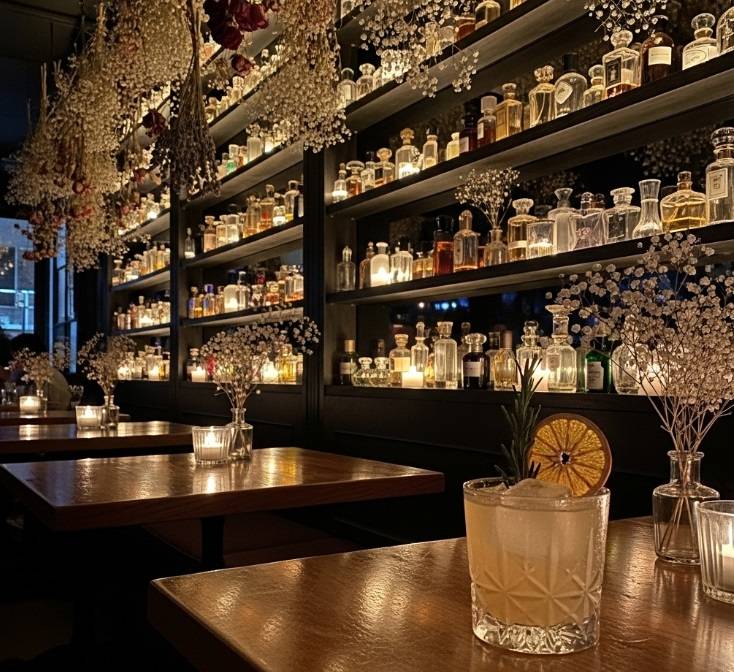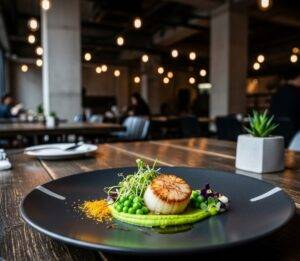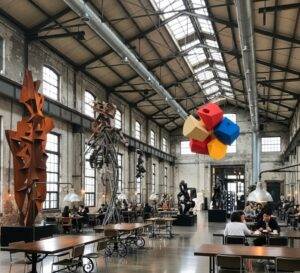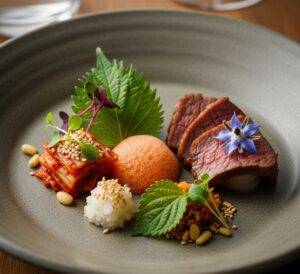In a city as dynamic as Seoul, a meal is rarely just about sustenance. It’s about culture, design, and connection. Nowhere is this more apparent than in Seongsu-dong, the city’s vibrant hub of creativity, where former warehouses and factories have been reborn as canvases for culinary innovation. For those who believe dining is an art form, finding unique dining experiences in Seongsu is the ultimate treasure hunt. This isn’t a list of every restaurant; it’s a curated collection of three distinct encounters, each promising to engage your senses and leave an indelible mark long after the last bite.
Whether you’re drawn to architectural grandeur, a meticulous culinary narrative, or a whimsical escape from reality, this guide will help you find the Seongsu experience that speaks to you.
The Architectural Marvel: Industrial Grandeur Meets Art
For those who believe the setting is as crucial as the cuisine, this category is defined by breathtaking design and a powerful sense of place. It’s where architecture tells the first story.
Daerim Changgo (대림창고) Factory Gallery Cafe
- The Concept: Daerim Changgo isn’t just a restaurant; it’s a living exhibition. Housed in a beautifully preserved 1970s rice mill, it masterfully blends industrial heritage with contemporary art. The concept is to dine within a gallery, where colossal kinetic sculptures and vibrant paintings are as much a part of the experience as the food on your table.
- The Ambiance & Design: The scale is the first thing that will astound you. Soaring ceilings with exposed steel beams, timeworn red brick walls, and vast, open spaces create a dramatic backdrop. Sunlight streams through massive windows, illuminating the art installations scattered throughout. It effortlessly earns its reputation as one of the most instagrammable restaurants seoul has to offer, with every corner presenting a new, perfectly framed shot.
- The Food: The menu is approachable yet refined, offering Italian-inspired comfort food that complements the relaxed, creative atmosphere. Think gourmet pizzas with artisanal toppings, hearty pastas, and rich, decadent tiramisu. Their signature “Changgo Pizza” is a crowd-pleaser, but the true highlight is enjoying a expertly brewed coffee or a glass of wine while wandering through the gallery space.
- How to Book: Walk-ins are generally accepted, especially for coffee and drinks. However, for weekend dining or larger groups, it’s wise to arrive early to secure a table. No complex reservation system is needed, making it a more spontaneous option.(google map link)
The Culinary Journey: A Symphony of Flavors
This is for the true gourmand, the diner seeking a narrative told through a sequence of meticulously crafted dishes. It’s an experience built around the chef’s vision, technique, and the finest seasonal ingredients.
Restaurant Onjium (온지음)
- The Concept: While technically located just across the bridge from Seongsu, Onjium is the essential pilgrimage for any serious foodie exploring the area and represents the pinnacle of a best tasting menu seoul experience. Rooted in the philosophy of “learning from the old to create the new,” Onjium is a research institute dedicated to preserving and reinterpreting traditional Korean Royal Court cuisine. A meal here is a profound, educational journey through Korea’s culinary heritage. Its dedication to this craft has earned it a coveted star in the seongsu-dong Michelin guide (and Seoul’s wider guide).
- The Ambiance & Design: The dining space is a masterclass in minimalist Korean aesthetics. Clean lines, natural wood, and subtle textures create a serene and contemplative atmosphere. Each element, from the hand-crafted ceramics to the understated lighting, is chosen to focus your attention squarely on the food. The design communicates respect for tradition without being stuffy, creating an ambiance of quiet luxury.
- The Food: The tasting menu is the only option, and it changes seasonally to reflect the peak of Korea’s bounty. You won’t find fleeting trends here, but rather a deep exploration of fermentation, preservation, and balance. The highlight of a recent autumn menu was the Sinseollo (a Royal Hot Pot), presented with a breathtaking arrangement of meticulously prepared vegetables, meats, and seafood in a delicately flavored broth. It’s a dish that is as much a visual spectacle as it is a culinary masterpiece.
- How to Book: Bookings are mandatory and are notoriously difficult to secure. Reservations typically open on a specific date one month in advance via the CatchTable app or their official website. Be prepared to book the moment reservations become available.(google map link)
The Themed Escape: Dining in Another World
For adventurers who want to be transported, these restaurants build an entire world around their concept. It’s immersive, theatrical, and a complete departure from the everyday.
Le Comptoir de Scent
- The Concept: Imagine dining inside a perfumer’s secret garden. Le Comptoir de Scent is a French-inspired bistro built around the art of fragrance. The entire experience, from the decor to the dishes and the cocktails, is designed to evoke specific scents and memories. It’s a multisensory concept that goes far beyond taste, making it one of the most unique and romantic unique dining experiences in Seongsu.
- The Ambiance & Design: The interior feels like a provincial French apothecary lost in time. Walls are lined with antique wooden cabinets filled with perfume bottles and dried flowers. The lighting is warm and intimate, with candlelit tables and plush velvet seating. A canopy of hanging botanicals and a subtle, custom-designed fragrance in the air complete the immersive illusion. Every detail is curated to be photogenic and enchanting.
- The Food: The cuisine is modern French with a creative twist. Dishes are often named after fragrance notes (“Smoky Rose,” “Citrus Verbena”) and incorporate herbs, spices, and floral elements that tie into the theme. A signature dish is their lavender-infused duck confit, where the subtle floral aroma perfectly cuts through the richness of the meat. Their cocktail menu is equally inventive, featuring gin infusions and aromatic garnishes.
- How to Book: Reservations are highly recommended, especially for dinner service. Bookings can be easily made through the Naver Booking platform a week or two in advance. Request a table near the window for the best lighting and atmosphere.
Planning Your Seongsu Food Adventure: FAQ
-
Q1: Are reservations essential for high-end restaurants in Seongsu?
- A: Yes, absolutely. For any restaurant offering a tasting menu or those with significant hype (like Michelin-recognized spots), reservations are mandatory. For popular places, you should plan to book several weeks, or even a month, in advance using apps like CatchTable or Naver.
-
Q2: What is the typical price for a tasting menu experience in Seoul?
- A: Prices can vary significantly. A high-end, Michelin-starred tasting menu can range from $150,000 KRW to over $350,000 KRW per person, excluding drinks. More accessible tasting menus at contemporary bistros might fall in the $80,000 – $150,000 KRW range.
- Q3: Is there a dress code for fine dining in Seoul?
- A: While Seoul is generally fashion-forward, most fine dining restaurants do not have a strict black-tie dress code. The unofficial rule is “smart casual.” Avoid sportswear, shorts, and flip-flops. Opt for a clean, stylish outfit to respect the restaurant’s atmosphere and fellow diners.
- Q4: Besides dining, what is Seongsu-dong known for?
- A: Seongsu-dong is Seoul’s creative epicenter. It’s famous for its independent art galleries, pop-up stores from major fashion brands, artisan coffee shops, and unique concept stores. Before your dinner, spend the afternoon exploring the street art and browsing the boutiques that line the streets around Seoul Forest.\
Hi, I’m [jeybee]. As a long-time resident of Seoul, I’m passionate about uncovering the authentic, everyday magic of Korea. This blog is my way of sharing my favorite spots, tips, and cultural insights with you, beyond the usual tourist traps.




